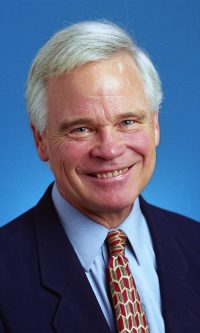DG MARTIN COLUMN: Reckoning with our history
Published 11:01 am Friday, July 9, 2021
|
Getting your Trinity Audio player ready...
|
Having gone through a tenure battle at the University of North Carolina at Chapel Hill based, in part, on conflicting views about how history of racism should be taught in our schools, it is refreshing to encounter “How the Word is Passed: A Reckoning with the History of Slavery Across America” by Clint Smith. The book debuted last month at number one on The New York Times bestseller list.

D.G. Martin
Smith, a New Orleans native, Davidson College graduate, Harvard Ph.D., and staff writer for The Atlantic, explores race and racism not simply by preaching or pontificating. Instead, he takes his readers to places where stories of race and racism are told by real people.
Smith’s first stop is at Monticello, where guides not only tell of Thomas Jefferson’s genius and lovely home. They also tell how he managed more than 100 slaves, including six who were his own children. He sold slaves to get funds to pay his debts. Finally, at his death, all his slaves were sold, breaking up the families of many of them.
This man whose words inspired our high ideals is forever connected to his participation in the institution of slavery.
Smith visits Whitney Plantation in Louisiana where guides and exhibits describe the ill treatment of slaves whose labor in sugarcane and cotton fields created exorbitant sums for plantation owners and businesses in New York and London.
The nearby Louisiana State Penitentiary is on the site of Angola, a gigantic plantation. The prison has become a modern enslaver and exploiter of its mostly black inmates.
At Bradford Cemetery in Petersburg, Virginia, Confederate soldiers from the Battle of the Crater are buried. Today reunions of such organizations as Sons of Confederate Veterans demonstrate that the “Lost Cause” is still alive, preserving and strengthening the ideals of white supremacism.
In Galveston, Texas, events of Juneteenth are remembered by some current residents, who are descendants of slaves liberated on June 19, 1865. Smith learns that many of the supposedly free people were quickly returned to slave-like repression.
In New York City, he learns this city had the second largest slave market, next to Charleston. Banks and businesses in the city were deeply involved with wealth created by slaves in the cotton fields of the South.
Finally, Smith takes us to Africa and Senegal where the “Door of No Return” has drawn tourists and pilgrims because it is said that millions of Africans departed from this place in slave ships. In fact, only about 35,000 left from this place. But Smith believes that the myth of the millions departing is as important as if it were fact. As one Senegalese told him, “One slave is too many.”
Smith persuades us that a good way to learn about the impact of slavery and racism is to visit those places where significant events occurred or people lived and worked. Such places are almost everywhere.
I thought of the monuments to slavery and racism in my hometown, Davidson, where Smith went to college. The school’s greatest benefactor before the Civil War was Maxwell Chambers, a slaveholder and cotton broker who provided funds for a magnificent campus building. Although the building burned 100 years ago, its ghost appears during the dry seasons when the outline of its foundations is marked by dying grass.
We took great pride that Confederate Gen. D.H. Hill is buried in the town graveyard. We bragged that both Hill and Stonewall Jackson had married daughters of the first Davidson president.
Smith’s book has prompted many other memories of how my beloved hometown and college were part of an oppressive system of white dominance. Next time Smith and I are in town at the same time, we can talk about the impact of the town and campus and reckon with our common history.
D.G. Martin hosts “North Carolina Bookwatch” at 3:30 p.m. Sunday and 5 p.m. Tuesday on PBS North Carolina (formerly UNC-TV). The program also airs on the North Carolina Channel Tuesday at 8 p.m. and other times.




